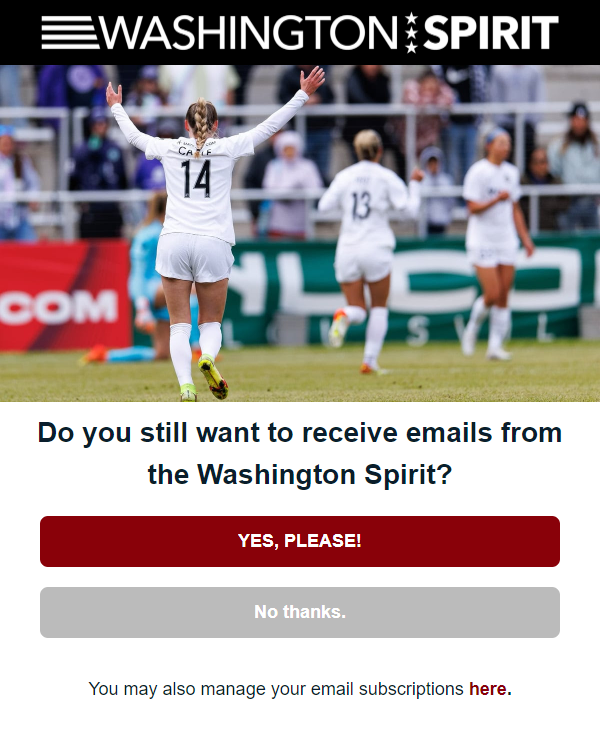
7 Tips for Creating a Great Onboarding Email Sequence
First impressions are key. Are you making the most of the opportunity? Whether it’s a new advocate taking action, or

Every effort has them. It doesn’t matter if you’re a multinational NGO or a small association, you’re going to be faced with the inevitable: the inactive contact.
Inactive contacts are those stakeholders in your database who haven’t participated in or interacted with your cause over a certain amount of time.
More than likely, these individuals were originally imported into your CRM a while back or have taken action in the past. BUT, over the course of time – while their emails haven’t bounced – they haven’t participated, and potentially haven’t even opened an email.
How do you identify inactive contacts?
While each organization has their own qualifiers, a great place to start would be any individual who’s not opened an email in the last 9 months.
SparkInfluence does the work for you. Get started quickly reengaging inactivate contacts with pre-built searches at your fingertips.
Let’s not beat around the bush: inactive contacts in your database are dragging your effort down. If you’re being judged on the metrics your effort produces, then you’re immediately at a disadvantage if you include people who never participate.
When you’re reporting up to leadership, or discussing impact with an elected official’s office, it’s key to have the most current numbers. While a large database of stakeholders may seem like a good thing, if they’re not taking part in your effort, they won’t have an impact on outcomes and/or may make it seem like folks aren’t interested in your goals.
When you’re sending email, you want to make sure that your metrics are telling the right story. If you’re including folks who’ve never opened an email, or haven’t opened a message in more than a year, you’ll be dragging down your overall open rates, clicks, and actions taken by including people who may not even want to be part of your effort. Weeding out those folks who are no longer interested may bring down your overall stakeholder count but will boost your participation rate.
Perhaps even more worrisome than numbers that don’t necessarily add up, Email Service Providers (ESPs) such as Gmail, Outlook, and Yahoo will more than likely start to penalize you if you keep sending to their customers who don’t open your messages. With too many non-openers, you risk your future messages being sent to the dreaded Promotions tab, or worse, Spam.
Getting your inactive stakeholders to click and confirm their participation with your effort isn’t going to happen overnight. You may need to make more than one ask – how many chances do you want to give them to act and stay involved? As you craft your emails, consider your timeline – how long will you give stakeholders the opportunity to re-engage before you unsubscribe them from your effort?
In addition to offering your stakeholder the choice between remaining subscribed to your effort and unsubscribing completely, you’ll want to extend an invitation to update their preferences instead.
With Email Categories in SparkInfluence, you can quickly & easily organize your emails by topic (like Advocacy Emails, Fundraising/PAC, Industry News, Events, etc.) so your stakeholders can remain engaged with messaging that interests them most, while opting out of those that may not be as applicable.
You’ve sent your “Last Chance” email, and stakeholders have indicated they want to continue hearing from you. Now what?
Set up a re-engagement automation to bring these folks back into the fold, so you don’t lose their attention. Start with something that has a low barrier to entry, like asking them to follow you on social media.
Ensuring you’re staying in touch with them consistently in the coming weeks and months may help to ensure you won’t lose their attention again.
“Last Chance” emails should be straightforward, to the point, and include the following:

The good news is that you don’t have to start from scratch – our platform can help you get going in no time. The main dashboard provides quick links to those who haven’t opened emails or taken action.
Head to the Advanced Search to further identify your inactive stakeholders – whether that’s everyone who’s never opened an email, those who haven’t clicked through in 180 days, or some other segment of your database – and simply add your desired filters, and save your search. You’re now set to email this group of stakeholders and get started winning them back.
Dive in today with SparkInfluence’s Communications Suite and get started seeing results. Don’t hesitate to reach out to our Support Team if we can help.

First impressions are key. Are you making the most of the opportunity? Whether it’s a new advocate taking action, or

Email is Dead, Long Live Email You’ve more than likely heard the refrain “Email is Dead.” Much to the chagrin

In-Person Events are Back, Are You Ready? From fundraisers to networking events, conferences to lobby days, and fly-ins: in-person events
SparkInfluence helps the most successful government affairs and public relations teams better educate, engage and empower their networks to act.